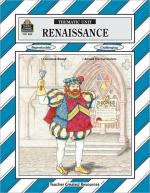|
This section contains 2,817 words (approx. 10 pages at 300 words per page) |

|
The Cosmos. Despite the persistent myth that scholars in Christopher Columbus's day feared he would sail off the edge of a flat earth, there is ample evidence in texts from the early Middle Ages suggesting a basic understanding of Earth's sphericity, its location at the center of the spherical cosmos, and its immobility. These ideas survived the economic collapse of the Western Roman Empire. The seven liberal arts that well-born Roman citizens studied included the study of astronomy. This curricular model became the foundation for the revival of education in the Carolingian period and was a presumed basis for advanced study in the high medieval university; hence, rudimentary knowledge of cosmology never wholly disappeared from learned culture. However, a working knowledge of astronomy, sufficient to cast a medical horoscope, was a rarity in the Latin West before Arabic treatises were sought out and...
|
This section contains 2,817 words (approx. 10 pages at 300 words per page) |

|




